Cyberwarfare: what’s at stake
Your communications
in the crosshairs
Videoconferencing tools have become one of the main vectors
for industrial and technological espionage.
Are you a public institution, large business or SME?
If so, communications espionage concerns you.
In this age of cyberwarfare, organisations of all sizes—including the most vulnerable—are experiencing information theft.
Four types of attacks targeting your videoconferences
 |
Cyberespionage targets a nation’s or organisation’s most sensitive data. In videoconferencing, attackers intercept shared files and conversations—as demonstrated by the recent leak of a recorded call between German army officers. |
 |
Zoombombing refers to unauthorised intrusions into online meetings, often due to weak access controls. In 2024, a virtual event with U.S. Federal Reserve Governor Christopher Waller was cancelled after a pornographic video was streamed by an intruder—underscoring the risks for public institutions. |
 |
Cybercriminals use AI to mimic the image and voice of colleagues or superiors in online meetings. In 2024, a major Hong Kong-based multinational was hit by such an attack—the largest recorded deepfake CEO fraud using videoconferencing. |
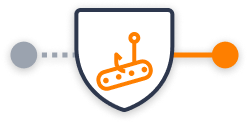 |
Fake meeting invitations can install malware on the user's device and grant full access to the system, often by abusing device-code authentication methods. |

Cyberespionage targets a nation’s or organisation’s most sensitive data. In videoconferencing, attackers intercept shared files and conversations—as demonstrated by the recent leak of a recorded call between German army officers.

Zoombombing refers to unauthorised intrusions into online meetings, often due to weak access controls. In 2024, a virtual event with U.S. Federal Reserve Governor Christopher Waller was cancelled after a pornographic video was streamed by an intruder—underscoring the risks for public institutions.

Cybercriminals use AI to mimic the image and voice of colleagues or superiors in online meetings. In 2024, a major Hong Kong-based multinational was hit by such an attack—the largest recorded deepfake CEO fraud using videoconferencing.

Fake meeting invitations can install malware on the user's device and grant full access to the system, often by abusing device-code authentication methods.
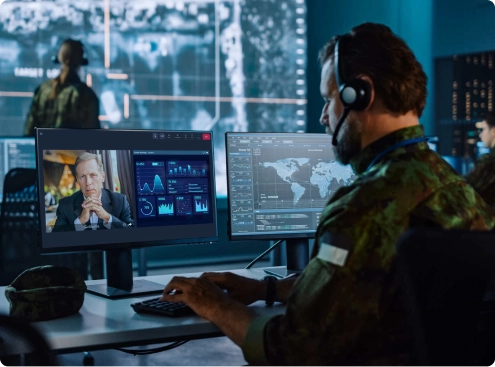

 Tariq Krim,
Tariq Krim,
Entrepreneur and web pioneer.
«We live in an uncertain world where the commercial internet has become a militarised environment, riddled with state interference and cyberattacks.
Today, it’s crucial to secure your connections, protect your cloud, and define what is secret or private versus what can be shared on social or public networks—whether you’re a business or a public authority.»
The benefits of Tixeo secure videoconferencing
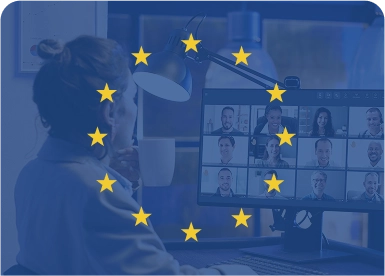
European data hosting
With TixeoCloud and TixeoPrivateCloud, your data is stored on servers located in Europe.
With TixeoServer, you retain full control of your data using your own secure videoconferencing infrastructure.
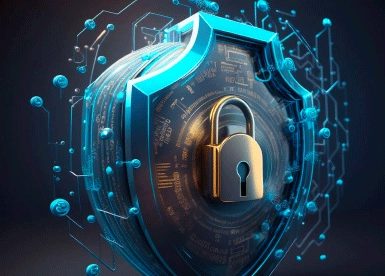
Security by default
CSPN-certified by ANSSI, Tixeo’s architecture is founded on security and developed without third-party dependencies.
Its Secure by Design approach addresses potential vulnerabilities at the source—before release.
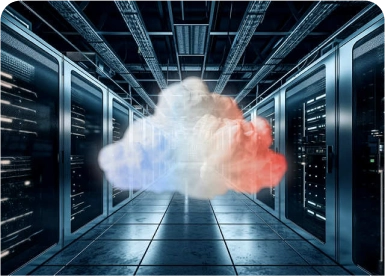
On-premises deployment
Tixeo adapts to restricted environments, including air-gapped or classified networks.
You choose whether or not to expose the system to the internet—ensuring offline availability for crisis situations and out-of-band communication.
In Cyberwarfare, secure communication Is your strongest ally
Cyberwarfare is now a reality—attacks, espionage, sabotage.
Digital infrastructures are the first to be targeted.
Organisations must not only protect themselves but also ensure business continuity.
A secure videoconferencing solution has therefore become a strategic asset.
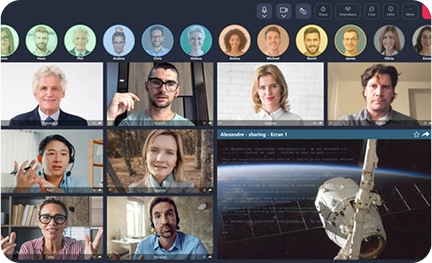
With Tixeo :
- You protect strategic communications with colleagues, clients and suppliers through genuine end-to-end encryption with no backdoors.
- You gain an emergency communications solution, usable even without internet access thanks to on-premise deployment.
- You choose a trusted, independent provider and a proprietary technology certified CSPN by ANSSI.
As an independent French company and a key player in France’s cybersecurity ecosystem, Tixeo’s mission is to provide the most secure videoconferencing technology on the market. For 20 years, the company has focused on becoming Europe’s leading provider for highly sensitive communications.
Internally, Tixeo also fights espionage by training its teams through continuous cyber-awareness programmes—essential for securing networks and protecting data in a context of cyber conflict.
Everything you need to know about cyberwarfare
What is cyberwarfare?
Though sometimes subject to debate or sensationalism, global cyberwarfare (or hybrid war) commonly refers to offensive and defensive operations carried out in cyberspace—including sabotage, disinformation, and industrial espionage.
Geopolitical tensions between powers like the US, China and Russia are fragmenting the internet, with diverging models of regulation and control.
The absence of strong international agreements has created a legal vacuum that encourages cyber-offensive actions. State and state-sponsored actors exploit the interconnectedness and vulnerabilities of digital infrastructure.
The distinctive features of cyberwarfare are the difficulty of attribution (some attacks may amount to military operations) and the rapid evolution of attack methods.
Why does cyberwarfare matter?
Cyber operations are a powerful strategic lever. States can exert influence and achieve objectives without traditional military force.
One of the key indicators of a nation’s cyber power is its ability to leverage digital technology for national and international goals—including both defence and offence.
Which countries are involved?
International conflict has moved into the digital realm. The EU, US, Russia, Iran and China are all involved in this hybrid warfare. Within the EU, France is one of the most advanced countries in cybersecurity.
The 2024 Global Cybersecurity Index (GCI) ranks it in Tier 2 – “Advancing”, citing its strong legal framework (e.g. GDPR).
What are some of the most well-known attacks?
The 2010 Stuxnet case marked a major turning point in cyberwarfare. Jointly developed by the US and Israel, the Stuxnet worm specifically targeted Siemens SCADA systems used by Iran for uranium enrichment.
By exploiting multiple critical vulnerabilities, it manipulated centrifuges at the Natanz facility while concealing the anomalies. The result: thousands of damaged devices and a significantly delayed nuclear programme.
This was the first documented cyberattack to cause physical damage to strategic infrastructure.
More recently, Ukraine’s National Security and Defence Council published a study entitled “Cyber, Artillery and Propaganda”, analysing Russia’s methods.
The conclusion is clear: the war in Ukraine represents the world’s first large-scale cyberwar, with systematic cyberattacks targeting Ukrainian government offices, critical infrastructure and media outlets. Hybrid attacks have also impacted Ukraine’s allies. Across Europe, governments have sounded the alarm over Russian espionage and subversion campaigns.
How can organisations defend themselves?
To mitigate the threat of cyberwarfare, organisations must enhance their cyber resilience—implementing business continuity plans and secure communication tools.
These measures are essential to protect sensitive information and maintain operational capacity in the event of crisis—be it a cyberattack, IT outage or blackout.
International cooperation, such as the EU’s NIS 2 Directive, is helping to map cyber risks and strengthen preparedness across the continent.
What role does Tixeo play in the context of cyberwarfare?
Tixeo provides maximum security for the most critical online communications. According to the SIPRI Top 100*, 30% of Europe’s leading defence contractors use its secure videoconferencing technology.
The French provider offers CSPN-certified end-to-end encrypted communication with reinforced access control.
Thanks to its on-premise deployment model, the solution supports classified environments and ensures business continuity—even without internet access.
As a financially independent company, Tixeo has been serving major organisations in defence, industry & energy, finance, justice and public administrations for over 20 years—while maintaining strict control over its technological stack and limiting third-party dependencies.
What are some of the most well-known attacks?
The 2010 Stuxnet case marked a major turning point in cyberwarfare. Jointly developed by the US and Israel, the Stuxnet worm specifically targeted Siemens SCADA systems used by Iran for uranium enrichment.
By exploiting multiple critical vulnerabilities, it manipulated centrifuges at the Natanz facility while concealing the anomalies. The result: thousands of damaged devices and a significantly delayed nuclear programme.
This was the first documented cyberattack to cause physical damage to strategic infrastructure.
More recently, Ukraine’s National Security and Defence Council published a study entitled “Cyber, Artillery and Propaganda”, analysing Russia’s methods.
The conclusion is clear: the war in Ukraine represents the world’s first large-scale cyberwar, with systematic cyberattacks targeting Ukrainian government offices, critical infrastructure and media outlets. Hybrid attacks have also impacted Ukraine’s allies. Across Europe, governments have sounded the alarm over Russian espionage and subversion campaigns.
